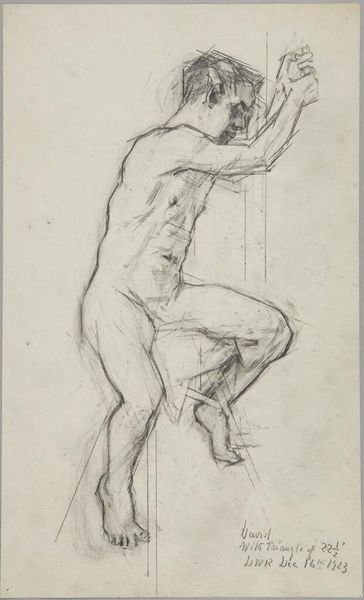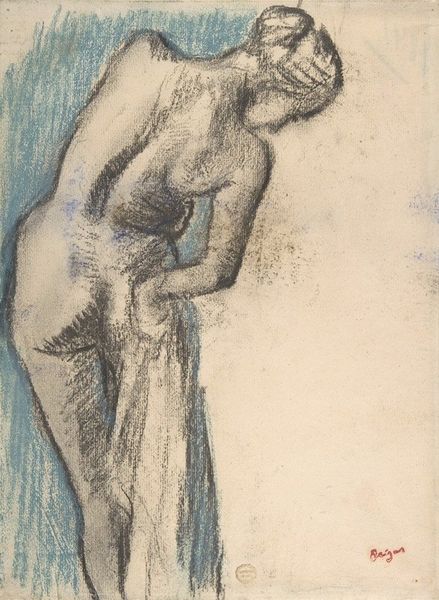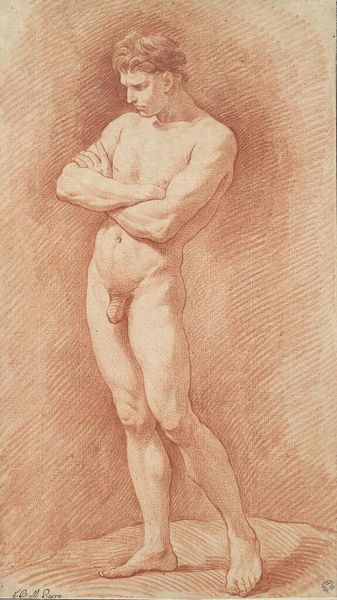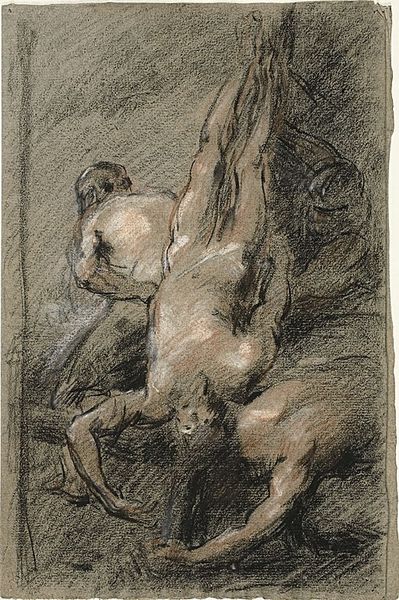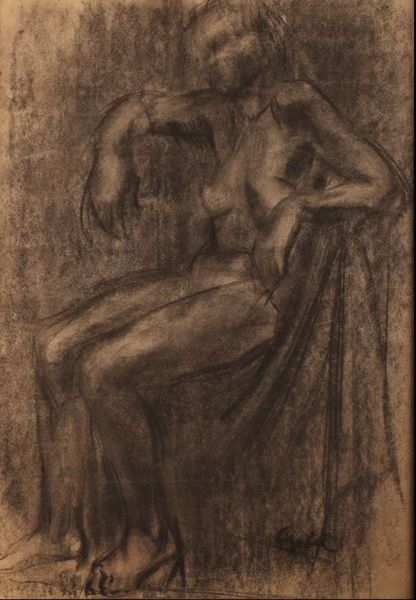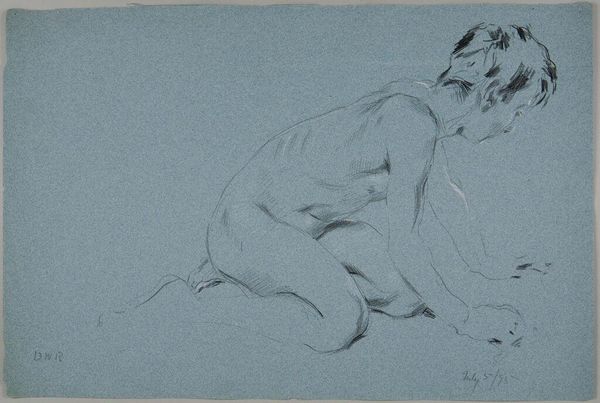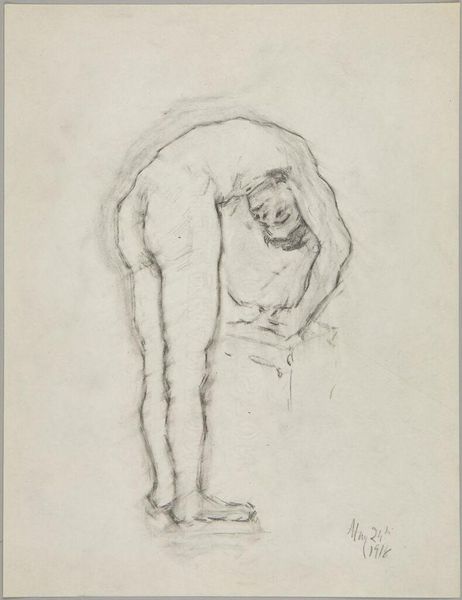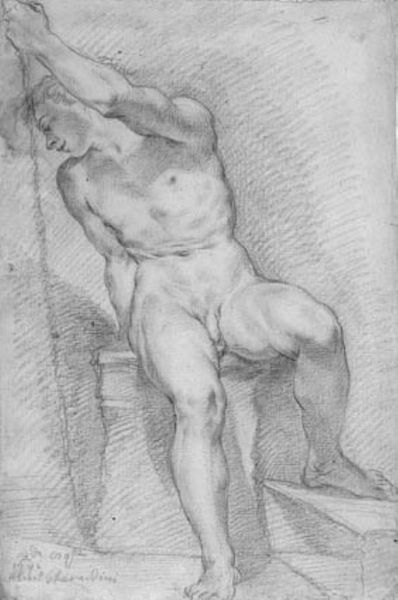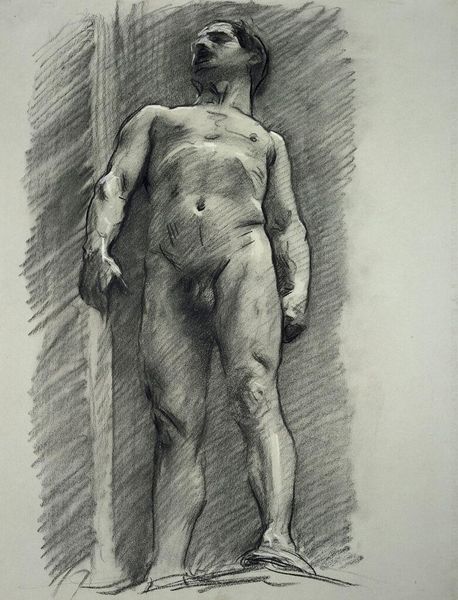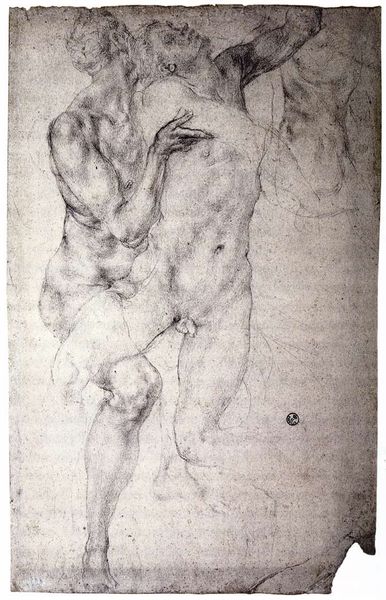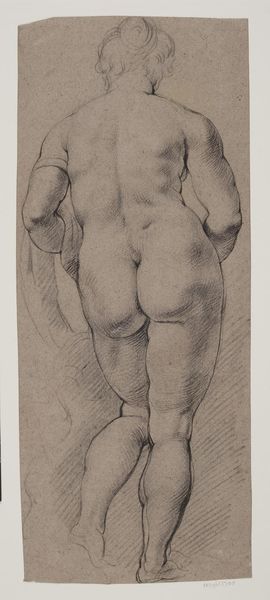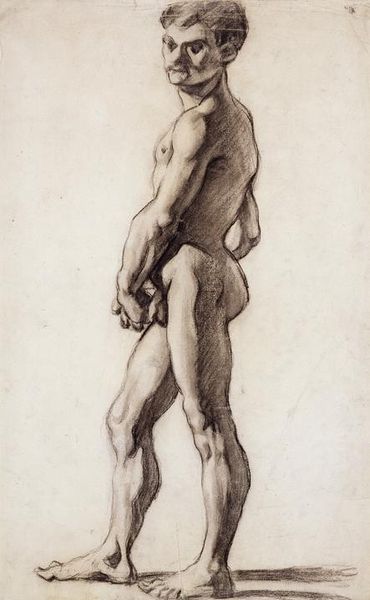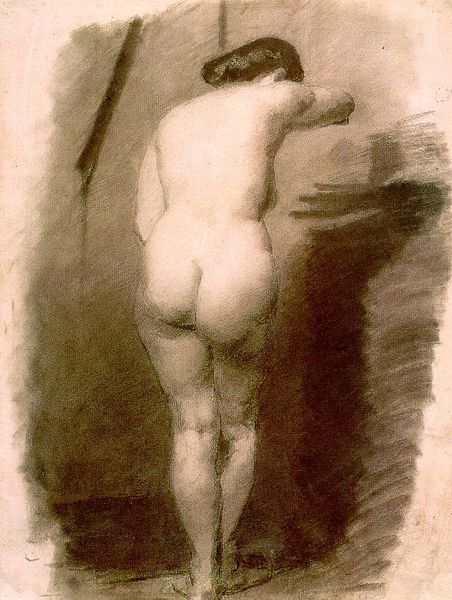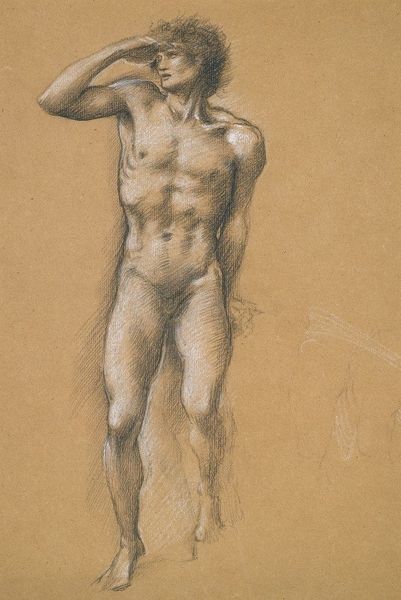
Copyright: Public domain
Editor: Here we have Degas’ "The Bath," created around 1894, rendered in charcoal, pastel, and pencil on paper. It feels intimate, like a stolen glimpse. What strikes you about it? Curator: The most compelling aspect for me is Degas’ explicit focus on the materiality of the image itself. Look at the raw, visible strokes of charcoal and pastel. He’s drawing our attention to the process of creation, the very act of making. This disrupts the illusionism expected in academic painting. Editor: So you’re saying he’s prioritizing the “how” over the “what?” Curator: Precisely. And think about the context. In the late 19th century, industrial production was booming, reshaping labor and consumption. Degas, in a way, mirrors this shift. He isn't just depicting a bather; he's revealing the means of artistic production, much like a factory exposing its operations. This blurs the line between high art and craft, asking us to consider the labor involved in art making. Editor: I see. By showcasing the raw materials, he connects it to larger issues of production and labor. Did the materials themselves influence how he approached the subject? Curator: Absolutely! Charcoal and pastel lend themselves to immediacy and revision, fitting his goal to capture fleeting moments and the process of observation, disrupting formal ideals in painting and offering insight into a period undergoing major manufacturing and industrial growth. The 'realness' comes from both subject matter and methods of making, hand in hand. Editor: That really changes how I see it. I initially saw an intimate scene, but now I also see an intentional commentary on artistic production. Curator: Exactly. By examining the materiality and process, we can uncover deeper layers of meaning about the work's historical context and the changing definitions of art and labor at the time.
Comments
No comments
Be the first to comment and join the conversation on the ultimate creative platform.
